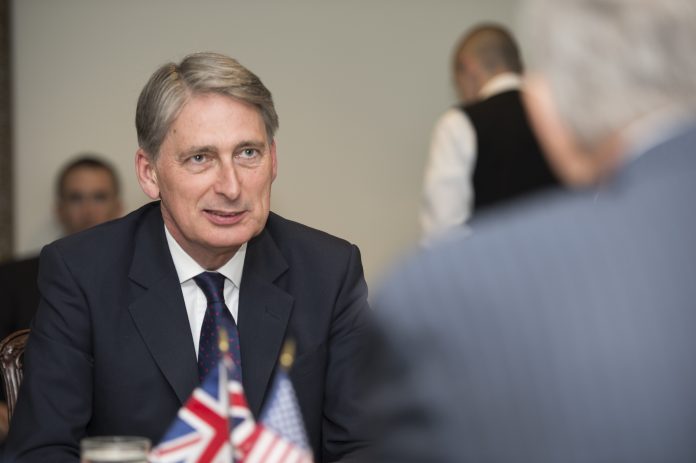
By Marc Ovits
If the Chancellor suffers from claustrophobia, he’ll have been having a hard time of it in recent weeks. Mr Hammond has been hemmed in on one side by sobering economic and fiscal forecasts; on another by public services and national infrastructure showing the strain after seven years of austerity; and on a third by members of his own party, willing him to fail. So when it came to this, his third Budget, how did the Chancellor play his unlucky hand?
Mr Hammond tried to strike a note of economic and fiscal optimism. As expected, the Office for Budget Responsibility (OBR), the Chancellor’s independent economic and fiscal arbiter, lowered its estimate for public borrowing in 2017/18 by £8.4 billion, on the basis of stronger-than-expected tax revenues and lower public spending so far this year. The country’s debt burden is still expected to start falling next year, allowing Mr Hammond to argue that we have turned the corner on the public finances. He was also keen to highlight the upward trend in employment.
Using what little flexibility he had, the Chancellor portrayed this as a Budget creating “a country fit for the future”. The reclassification of housing association debt from the public to the private sector has conveniently allowed Mr Hammond to shift his fiscal goal posts by around £5 billion a year. He also outlined plans to raise additional taxes from the corporate sector, including via indexation freezing, and through the “usual suspect” of clampdowns on tax evasion and avoidance. As a result, he was able to loosen his fiscal stance by £7 billion over the period to 2023 – a little more than expected ahead of his speech.
Some of this additional funding has gone to the National Health Service. Mr Hammond has allocated an extra £3.4 billion over the next three years, presumably hoping to avoid negative headlines over the winter months, and additional capital spending of £4.2 billion out to 2023. But the Chancellor is still intent on meeting his self-imposed fiscal goals, lowering government borrowing to 2% of national income by 2020-21 and eliminating the deficit altogether by the mid-2020s.
But that’s where the good
economic news ended
The OBR downgraded its outlook for UK GDP growth both in the short and medium term by more than expected. The short-term cuts – to projected growth rates of 1.5% this year and 1.4% next, from 2.0% and 1.6% respectively in the March Budget – are a little below economists’ current consensus. They are also disappointing for a small, open economy that would normally be benefitting from a world economy that is expanding at its fastest sustained pace since the global financial crisis. But it is the long-term downgrades – to growth rates averaging an anaemic 1.3% in 2019 and 2020 and only modestly higher beyond – that are ultimately more damaging to the Chancellor’s aspirations.
And Mr Hammond’s Brexit-fighting “war chest” has shrunk. The worsening economic news, combined with the fiscal impact of Mr Hammond’s U-turn on raising taxes for the self-employed back in March and the £1 billion post-election sweetener for the Democratic Unionist Party, has cut his headroom relative to his own fiscal rules from £26 billion at the time of the previous Budget to £14.3 billion currently. He chose to position this as a positive choice, to help hard-working families and ready the economy for the future. However, it leaves him with a very small margin to play with, given total tax revenues and public spending commitments amounting to hundreds of billions of pounds each year.
The Chancellor attempted to fight back on the OBR’s negative productivity message, with some productivity-boosting measures of his own. After all, the only way the UK can hope to escape its current economic challenges is by improving its productivity performance, enabling economic growth and tax revenues to rise faster than the OBR currently expects. Mr Hammond set out parts of the government’s industrial strategy, allocating tens of millions of pounds to skills training and transport infrastructure over the next few years, and hundreds of millions to increasing research and development tax credits. All other measures to create “an economy fit for the future” are, however, dwarfed in terms of funding by the £3 billion to be allocated over the next two years to preparing for EU exit – a concession from Mr Hammond to his pro-Brexit critics.
Housing market in focus
As expected, Mr Hammond also portrayed this as a Budget to tackle the UK’s “broken” housing market – and this is also where this Budget’s inevitable surprise came from. He repeated his goal of raising housebuilding to 300,000 new homes per year, aided by the commissioning of new building on public land and funding for local authorities. This will go some way – albeit modestly – towards addressing “supply side” problems in the housing market. But the “demand side” measures announced today, particularly his rabbit-from-the-hat of a stamp duty cut for most first-time buyers, risk adding more to house prices than to addressing issues with the housing stock. Indeed, that’s exactly what the OBR is predicting. It believes the stamp duty cut will increase house prices by 0.3%, mainly in 2018, with the biggest gainers, therefore, being people who already own property – not first-time buyers themselves.
So how did he do?
Budgets in the early years of an administration are normally when Chancellors get the “heavy lifting” done – raising taxes or shifting spending priorities in anticipation that this will pay dividends in time for elections up to five years into the future. However, these are not normal times.
Mr Hammond’s constraints meant that, despite his best efforts at vision and vigour, this Budget went with more of a whimper than a bang. A bold approach would have been to take housebuilding and infrastructure spending out of his budgetary rules altogether, arguing that they are too important to be left inside a self-imposed fiscal straitjacket.
Despite [Mr Hammond’s] best efforts at vision and vigour, this Budget went with more of a whimper than a bang.
Today could have been a golden opportunity to take a distinct, long-term view of the UK’s prospects, tackling the country’s productivity performance head on. An expanding economy would underpin confidence, spending and tax revenues, ultimately benefitting the public finances.
Instead, the two most notable measures in today’s Budget were the £3 billion allocated to Brexit preparations and the stamp duty cut for first-time buyers. The first was directed at Mr Hammond’s critics, many within his own party, who would like to see him replaced. The second was intended to provide a boost for young, aspiring house purchasers but may ultimately benefit their middle-aged peers.
Market implications
The Budget is likely to be received calmly within equity, currency and, perhaps most importantly for the Chancellor, debt markets. However, as already noted, it was delivered against a backdrop of a very disappointing UK economic outlook and with considerable uncertainty around the likely implications of Brexit. While Mr Hammond outlined a variety of measures that will affect the corporate sector, this anaemic growth environment is likely to have the greatest impact on companies operating in the UK over the coming years.
The Chancellor announced a raft of initiatives to improve productivity and to enhance the UK’s position in the technology and digital economy, the most material of these being the increase in the R&D expenditure credit to 12%. Time will tell as to the efficacy of these initiatives, but they will broadly be welcomed by the business sector.
Corporation tax rates were left unchanged, remaining competitive with our global peers. However, several initiatives, such as the freezing of the indexation allowance and the application of income tax to royalties relating to UK sales, will result in companies experiencing a tax increase.
The measures on the housing market were well-trailed overall and were broadly in line with investors’ expectations. However, the Chancellor is obviously losing patience with what he sees as the large housebuilders’ inefficient use of their land banks. His announcement of an “urgent review” into the “significant gap between the number of planning permissions granted and the number of homes built” reflects this impatience, with housebuilders’ shares weakening on the announcement. The supportive comments on the purpose-built private rented sector will be welcomed by institutions eager to participate further in this area.
Stability for pension and savings
Mr Hammond made few changes to the UK savings market. This will be welcomed by an industry that had called for stability in pensions and investments policy following some fairly significant changes over the past few years.
As a follow-up to the Treasury’s recent Patient Capital Review, the Chancellor announced a £20 billion action plan to unlock new investment in UK “scale-up” businesses. Alongside this will be a new fund through the British Business Bank, seeded with £2.5 billion of public money. The Chancellor also made reference to “facilitating pension fund access to long-term investments”. All these measures will be welcomed and may allow the further closing of the financing gap at the smaller end of the private equity market.
The Chancellor’s statement did not move markets significantly, an outcome that he is likely to be happy with. It was also a statement delivered in the context of a global economy that, while growing at a healthy pace, may be seeing the liquidity tide of low-interest rates and quantitative easing starting to ebb. The outcomes of events beyond our shores are, therefore, once again, likely to have more influence on UK markets, in all their forms, than the Chancellor’s pronouncements from the dispatch box this afternoon.








